Hypertension
Overview
High blood pressure, also known as hypertension, occurs when the pressure in the blood vessels exceeds 140/90 mmHg. While it is a common condition, it can have serious consequences if left untreated. Many individuals with high blood pressure do not experience symptoms, making it crucial to have regular blood pressure checks. Various factors contribute to the risk of developing hypertension, including age, genetics, weight, physical activity levels, diet, and alcohol consumption. However, making lifestyle changes such as adopting a healthier diet, quitting tobacco, and increasing physical activity can help lower blood pressure. In some cases, medication may be necessary. Blood pressure is measured using two numbers: the systolic pressure when the heart contracts, and the diastolic pressure when the heart rests between beats. Hypertension is diagnosed if the systolic blood pressure readings on two different days are ≥140 mmHg and/or the diastolic blood pressure readings are ≥90 mmHg.
Symptoms and Complications
Most individuals with hypertension do not experience symptoms, but extremely high blood pressure can lead to headaches, blurred vision, chest pain, and other issues. Regular blood pressure checks are essential as untreated hypertension can result in kidney disease, heart disease, and stroke. Individuals with very high blood pressure may experience severe headaches, chest pain, dizziness, difficulty breathing, nausea, vomiting, blurred vision, anxiety, confusion, buzzing in the ears, nosebleeds, or abnormal heart rhythm. If these symptoms occur alongside high blood pressure, immediate medical attention is necessary. Blood pressure measurement is typically performed by a healthcare professional, although automated devices can also be used. Treatment for high blood pressure involves lifestyle changes such as adopting a low-salt diet, losing weight, being physically active, and quitting tobacco. Medication may also be prescribed, with the recommended blood pressure goal depending on the presence of other health conditions. For most individuals, the goal is to maintain a blood pressure below 140/90, although those with certain conditions may aim for a lower target.
Treatment
Lifestyle changes can help lower high blood pressure. These include:
- eating a healthy, low-salt diet
- losing weight
- being physically active
- quitting tobacco.
If you have high blood pressure, your doctor may recommend one or more medicines. Your recommended blood pressure goal may depend on what other health conditions you have.
Blood pressure goal is less than 130/80 if you have:
Blood pressure goal is less than 130/80 if you have:
- cardiovascular disease (heart disease or stroke)
- diabetes (high blood sugar)
- chronic kidney disease
- high risk for cardiovascular disease.
For most people, the goal is to have a blood pressure less than 140/90.
There are several common blood pressure medicines:
There are several common blood pressure medicines:
- ACE inhibitors including enalapril and lisinopril relax blood vessels and prevent kidney damage.
- Angiotensin-2 receptor blockers (ARBs) including losartan and telmisartan relax blood vessels and prevent kidney damage.
- Calcium channel blockers including amlodipine and felodipine relax blood vessels.
- Diuretics including hydrochlorothiazide and chlorthalidone eliminate extra water from the body, lowering blood pressure.
